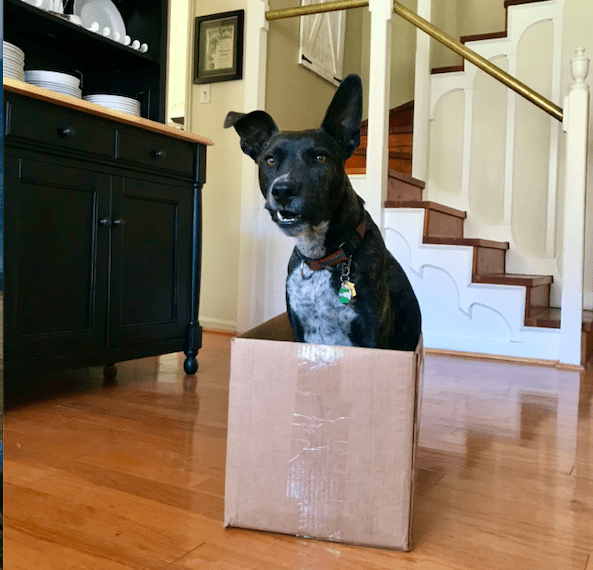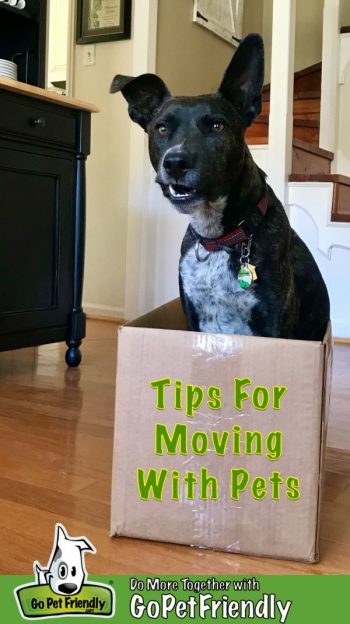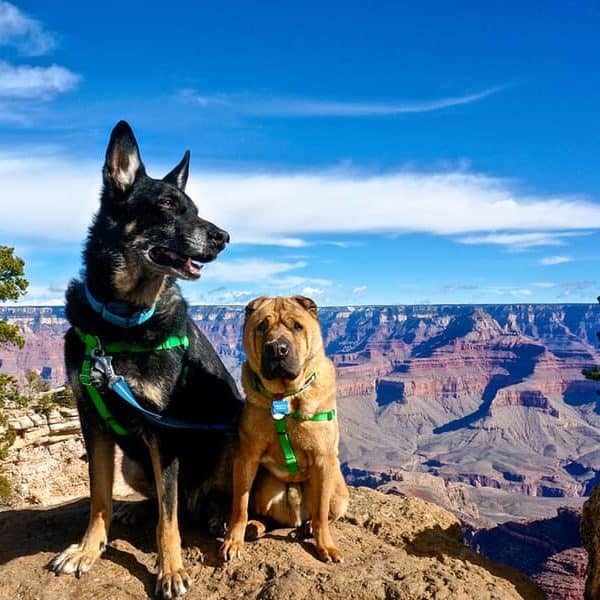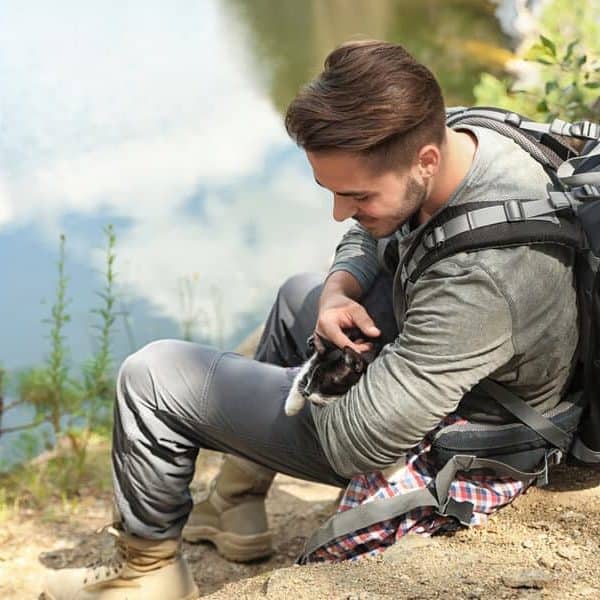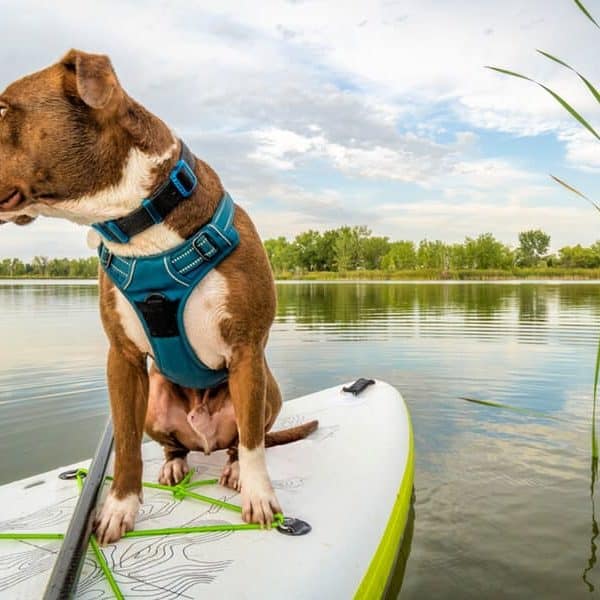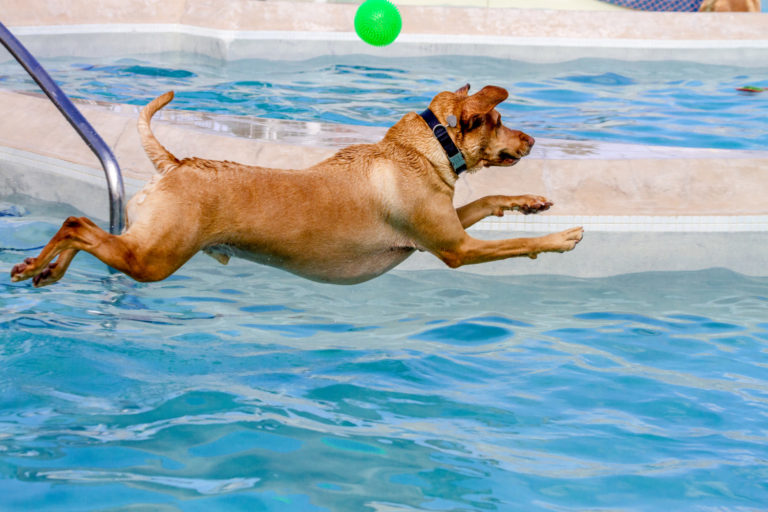Moving with pets involves an additional set of challenges and questions. With these tips, your whole family will relocate to your new home with less stress.
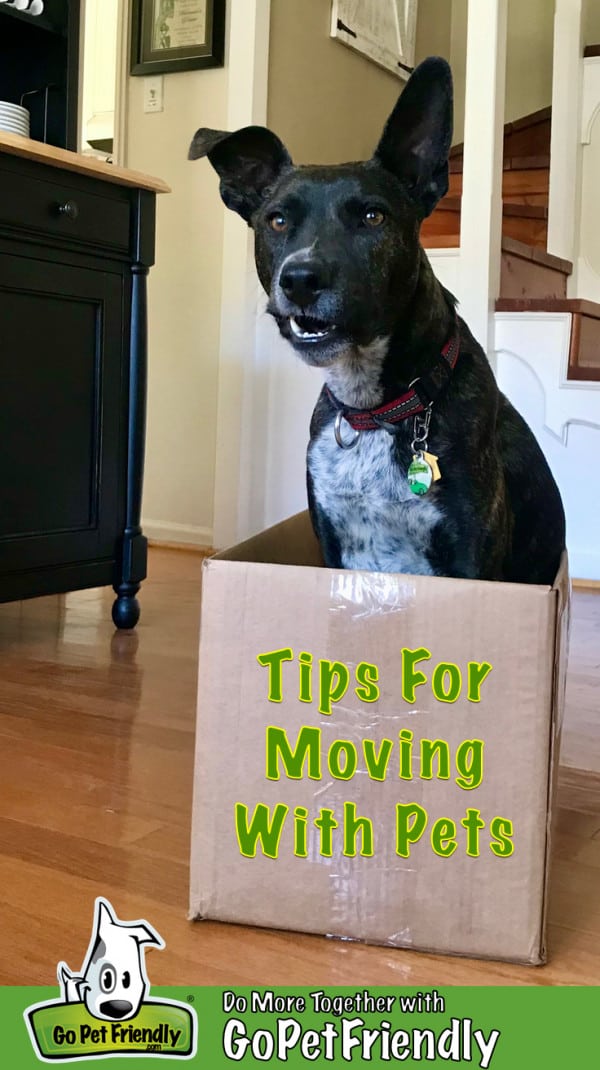
Around here, we focus mostly on helping you plan fun family vacations that include your pets. But not every trip can be a leisurely ramble to your favorite holiday destination. What if you’re relocating to a new city – or even a new country? We hope these tips for moving with pets help as you prepare and settle in your new home!
Preparing For A Move With Pets
Make A Plan
The sooner you start planning, the better! We’d all prefer a stress-free move. And when you’re relocating with pets, there’s a lot to be done.
Pets are sensitive to changes in their routine and will usually sense that things are shifting. Don’t be surprised if your dog or cat shows some anxiety by acting unsettled or clingy when you start the moving process.
To help your pet feel more comfortable, it’s best if one member of your family takes responsibility for your pet’s care throughout the move. Having a reassuring companion at every stop along the way will give your dog or cat more consistency and security.
In addition, it helps if you can stick to his normal schedule as much as possible — both in the days leading up to the move and during your travels to your new home.
Finally, continue feeding your pet in the same place, rather than using that area to stack boxes. And wait as long as possible to pack your pet’s favorite belongings, like his bed and toys.
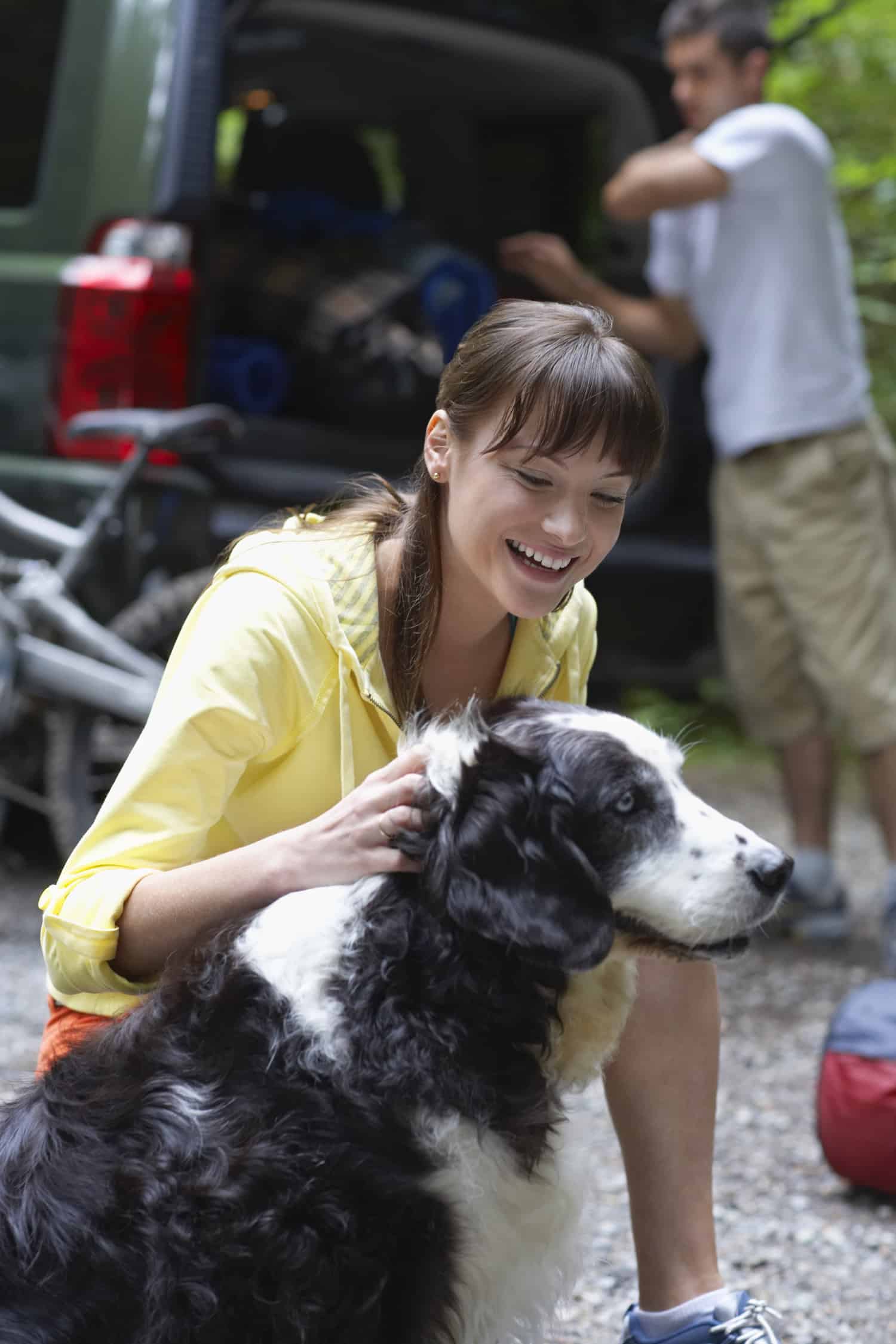
Make Arrangements For Moving Day
Are you moving across town or over the ocean? Driving or flying? Transporting your own belongings or hiring a mover? These decisions will determine what arrangements will reduce your pet’s stress on moving day.
Local moves can usually be completed in a day, so consider setting up an appointment for daycare. Or arrange for your pet to spend time with a friend on the big day. This will free up your attention to focus on the move.
If you’re driving to your new home, use our guide for Planning A Pet Friendly Road Trip to map your route and find restaurants, dog parks, and hotels along the way.
When booking accommodations, always confirm that the hotel’s pet policy allows for your entire family.
READ MORE ⇒ Hotel Chains Where Pets Stay Free

If moving with your pets involves air travel, reservations should be made well in advance. Only a limited number of pets can be transported on each flight, so make your arrangements as soon as possible.
There are some documents your pet will need to board the flight. Gather and place them in a carry-on that will stay with you during the entire trip. If you’re moving out of the country, it may be helpful to contact a pet transportation agency to assist you with the required paperwork.
Travel Tip: Make sure that your pet’s identification tags are up to date before your move. Include you cell phone number on the tag so you can be contacted while you’re traveling. Also consider having your pet microchipped, to assist them in getting back to you if they become lost.
READ MORE ⇒ US Airline Pet Policies
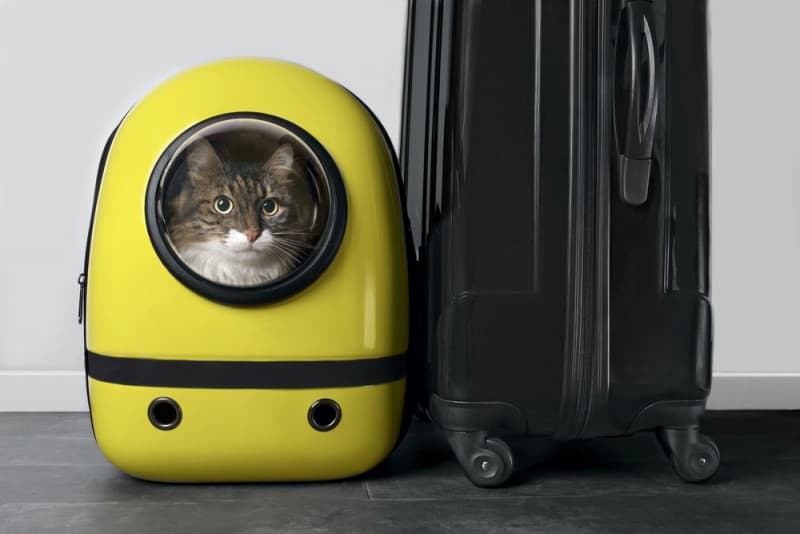
Know The Law
Most states have laws regarding the importation of dogs, cats, horses, and other pets. And the requirements in some states are more onerous than others. For example, Hawaii’s pet travel restrictions require weeks of preparation to avoid a long kennel quarantine.
Some states could inspect animals at the border, or ask to see health certificates. Contact the Animal Control Commission for the city or town where you’ll be living to determine what documents you’ll need and for information on licensing your pets.
Communities across the country have also passed breed specific legislation, banning or restricting more than 100 different breeds of dogs. Therefore, it’s vital to research the local laws before arriving with your dog. The Animal Control Commission should also provide you with information regarding local regulations.
Travel Tip: If your dog is impacted by breed specific legislation, or could be mistaken for a restricted breed, be prepared with a muzzle, leash, and proof of insurance. If you inadvertently violate the law, be polite and do your best to bring yourself and your dog into compliance. Even if that means immediately leaving the jurisdiction.
READ MORE ⇒ Pet Car Restraint Laws – Which States Require Pets To Buckle Up?
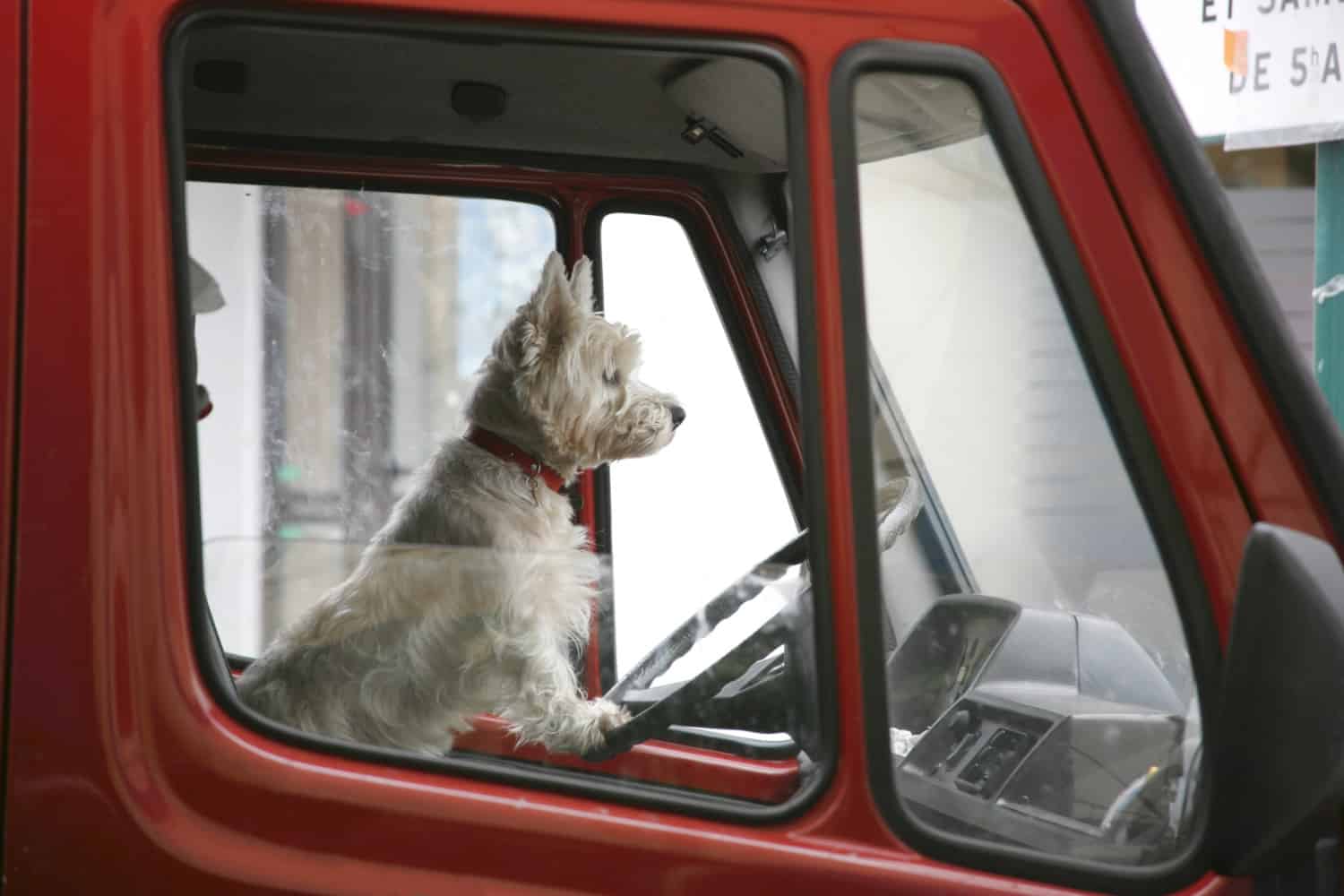
Get A Check-Up
Depending on your mode of travel your new home, certain documents relating to your pet’s health might be needed. Once you’ve determined the requirements, schedule an appointment with your veterinarian to get everything in order.
Keep the documents in a handy spot while you’re traveling, in case you’re asked for them along the way. The most commonly required documents when moving with pets are:
Proof of Rabies Vaccination: A current rabies tag and a proof of vaccination certificate signed by your veterinarian is your pet’s most important travel document. Whenever you travel with your pet, be sure to keep that certificate in your possession at all times.
Health Certificate: A certificate, signed by your veterinarian, describing your pet, listing all vaccinations, and indicating that your pet is in good health and free from infectious diseases. Health certificates are valid for a limited amount of time — sometimes for as little as 10 days. So, be sure that your pet arrives at your destination before the certificate expires.
Travel Tip: If you’re worried that your pet could get motion sickness, during your visit ask your veterinarian about prescriptions that help relieve those symptoms.
READ MORE ⇒ My Dog Hates The Car – Now What?!

Transporting Your Pet
Relocating By Motor Vehicle
Driving is the least expensive way of moving with pets. And it can also be the most fun! What dog doesn’t love a road trip, after all?!
Using GoPetFriendly.com to plan your trip allows you to locate pet friendly hotels, campgrounds, restaurants, and dog parks along the way. And if you have a few days to spare, plan to visit some pet friendly attractions along your route. What seemed like a chore can quickly become a fun adventure!
Arriving safely is always the first priority, so start by securing your pet while you are on the road. A crash-tested crate, carrier, or car harness will prevent your pet from distracting you while you’re driving. It will also protect them from injury in case of an accident.
Allow your pet time to get accustomed to whichever option you choose, starting out with short trips. And don’t forget to deactivate the airbag for any seat your pet will be occupying!
READ MORE ⇒ Best Crash-Tested Dog Harnesses For Traveling By Car
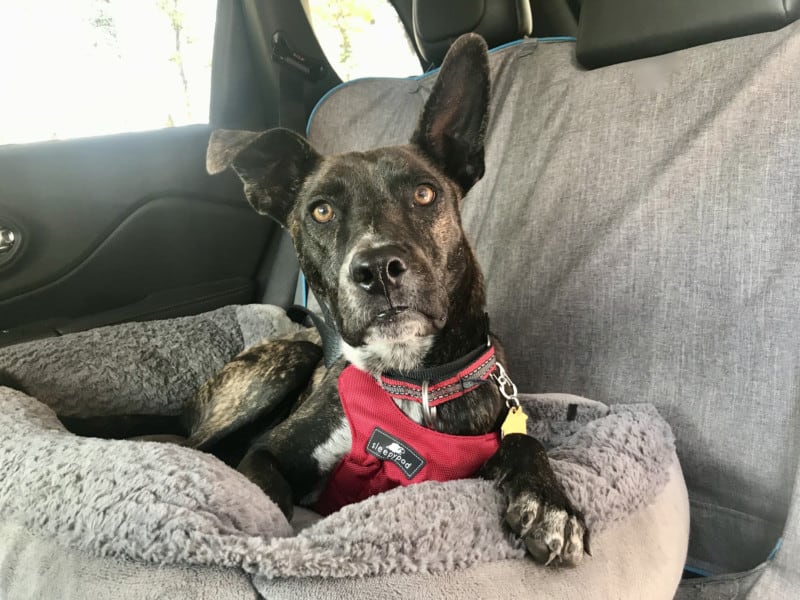
Traveling By Air
Many airlines allow pets aboard their flights, but some are more pet friendly than others. Comparing the policies, requirements, and pet fees will help you choose.
Dogs and cats that fit inside an airline-approved carrier can fly in the cabin with you. Larger animals and exotic pets will have to fly in the aircraft’s baggage compartment or be shipped as cargo. When deciding on an airline, carefully read their requirements for appropriate containers and instructions to prepare your pet for transport.
Also be aware that weather conditions could impact animals flying in the cargo hold. Airlines will not transport animals when extreme cold or hot temperatures could threaten their health. So, it’s possible that your pet’s flight could be affected by weather — even if yours isn’t.
Travel Tip: Unless advised by your veterinarian, sedating your pet prior to transporting him by air is not recommended.
READ MORE ⇒ Tips For Flying With Pets
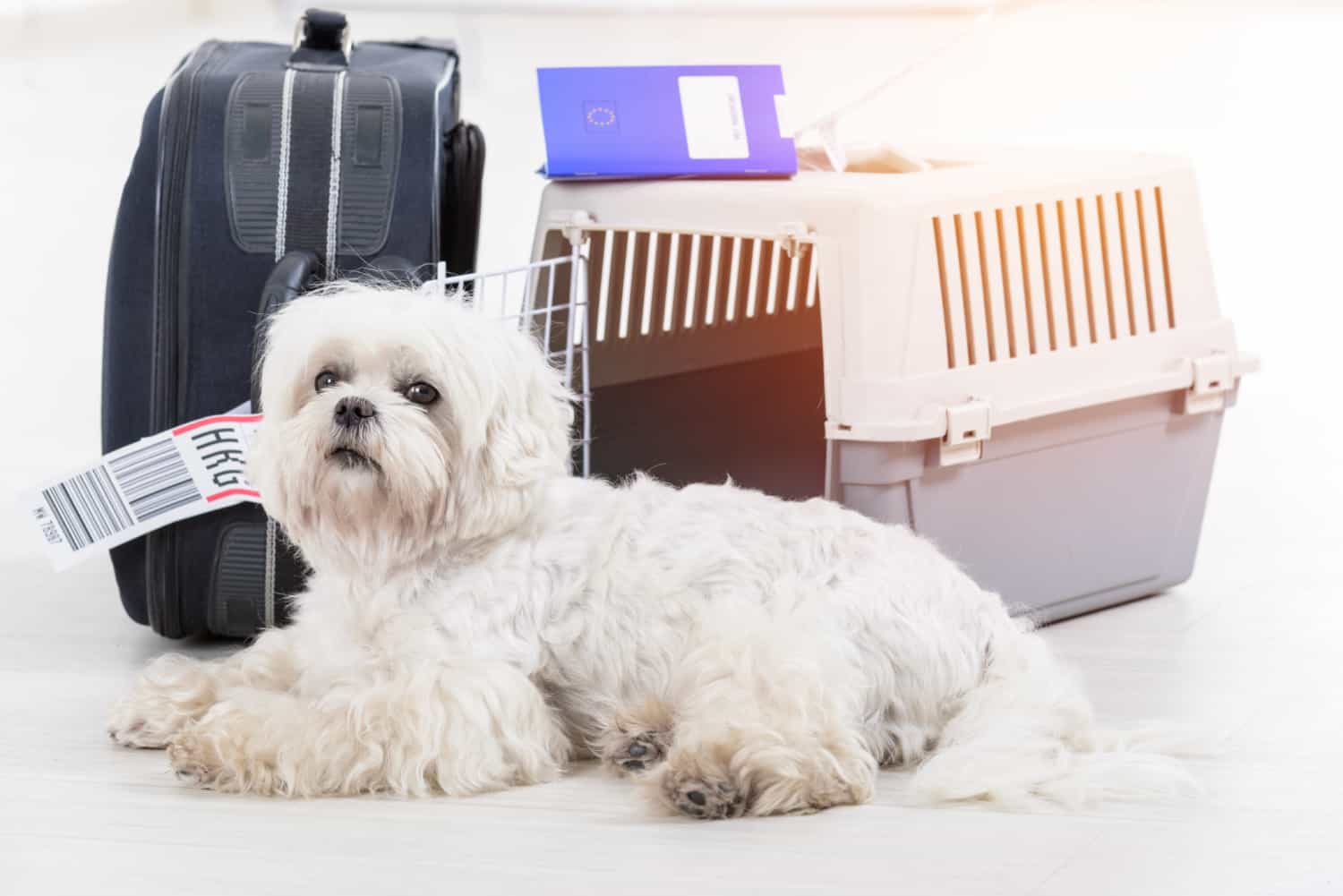
Your Pet’s Travel Bag
Pets need a lot of stuff when they are traveling! Here is a list of things to pack for your pet:
- Food and Treats – For canned food, don’t forget the can opener!
- Drinking Water
- Food and Water Bowls – Portable bowls pack easily and are great when you are out & about. Anti-spill water bowls are fantastic in the car.
- Your vet’s telephone number, and the telephone number for the National Animal Poison Control Center: (888) 426-4435
- Photos of your pet – In case you get separated, a current photo helps create posters quickly.
- Paper towels for muddy paws and other messes
- An old towel in case of rain
- A bed or blanket and a couple of toys – Having familiar items will make him more comfortable when you spend the night in unfamiliar locations.
- All medications, vitamins, supplements, etc.
- Waste bags for picking up
- First aid kit
Once you’re on your way, maintaining your pet’s schedule will help relieve any anxiety he might be feeling. Set a reminder on your phone to help you keep track of feeding times, and allow for plenty of breaks.
Travel Tip: When driving, it’s a good habit to attach your pet’s leash before you open the vehicle doors and detach it only after the doors have been closed. In new environments pets can easily get spooked and run off – keeping the leash connected will keep you all safer.
READ MORE ⇒ What Should You Pack When Traveling With Your Cat?
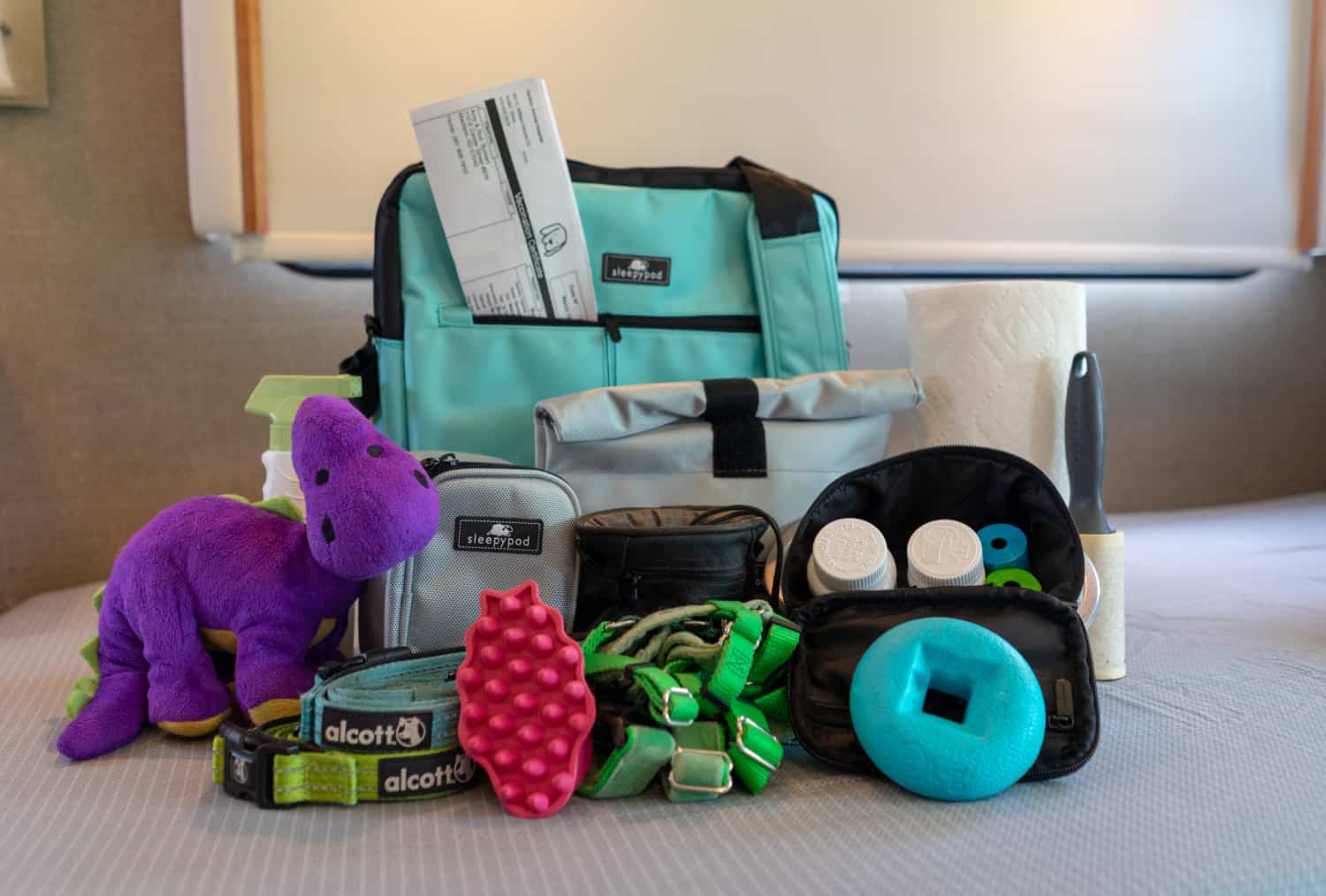
Using A Pet Transportation Company
If you can’t accompany your pet during your move, using a pet transportation agency can be helpful. These companies offer door-to-door service, picking your pet up at home and delivering him to your destination.
When shipping an unaccompanied pet, determine whether you or the agent you hire will be responsible for the following:
- Providing the shipping container, which must be marked with both the owner and the recipient’s name, address, and phone number
- Providing all required health documents
- Delivering the pet to the air freight terminal on time
- Paying the shipping charges
- Signing the shipping papers
- Picking up the pet at the destination
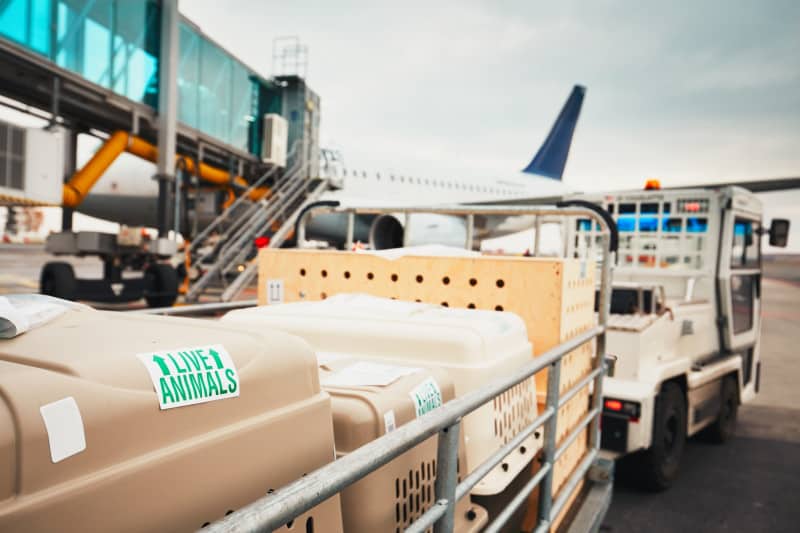
Settling In
Once you arrive at your new home, set up a quiet spot for your pet. Creating a refuge with his bed or crate and a few of his favorite toys in a low-traffic area will help him relax and settle in.
Dogs and cats go through a similar adjustment period as people when moving to a new house. Until they become familiar with their new abode and neighborhood, take care that they don’t become startled and try to escape.
Slowly encourage your pet to explore new rooms by placing toys and treats inside. And don’t wash their blankets, beds, and toys for the first few weeks. Having their scent on their things will help them feel settled.
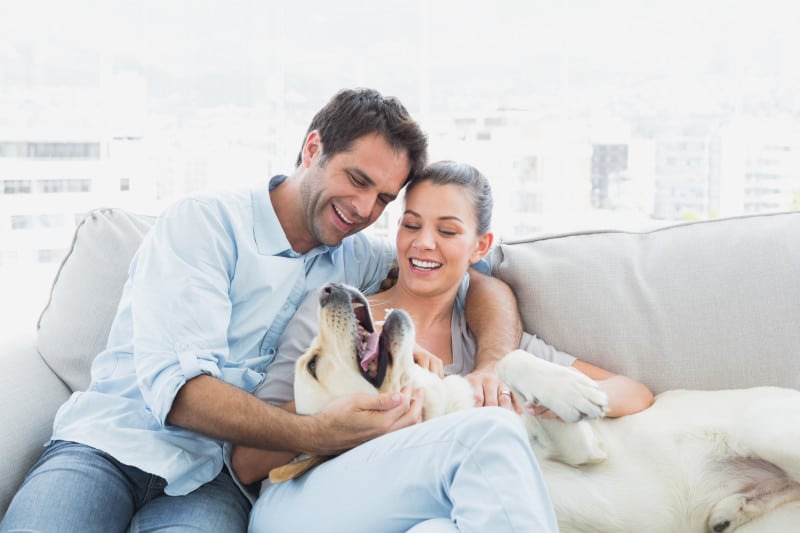
Develop a new routine by feeding them at the same time and in the same place each day. And, within a few weeks, they should have made the adjustment and be content in their new environment.
When you’ve caught your breath, locate a good veterinarian and give them a copy of your pet’s medical records. Supplying this information will save valuable time if your pet should require emergency treatment.
So, congratulations on your big move! We hope this information helps you and your pets breeze through the transition and enjoy your new home.
